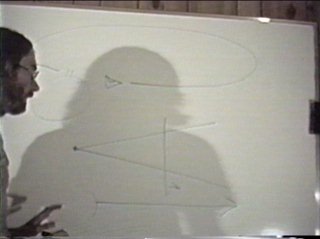
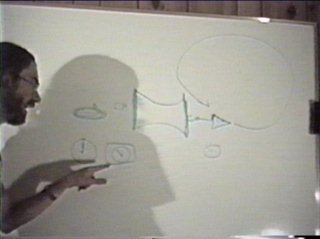
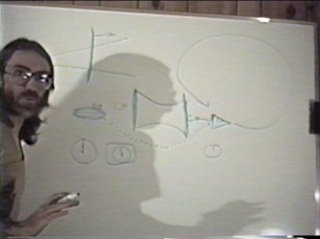
|
Using the space-time map I discuss Einstein's twin paradox. In subsequent diagrams
I use Kip Thorne's wormhole time machine to demonstrate that the time machine is based on a logical
fallacy, that fallacy being that time is actually affected by time dilation. I point out that the
relativistic age of an object means nothing to the cosmos, that instead the cosmos measures time
in geometric terms as a distance from the primordial singularity (absolute time). At the end of
the journey which dilates time for one mouth of the wormhole, I show that in absolute time, both
mouths of the wormhole are still the same age. All it takes is for a technician to reset the clocks
aboard the spacecraft, and objects put through one mouth of the wormhole pop out the other mouth
at the same instant. Kip Thorne merely failed to send a technician to reset the chronometers on
the ship, so he recorded the objects coming out at a different time. Had he reset the chronometers
to the correct time before he sent any objects through the wormhole, he would have realized his
time machine was logically flawed.
|
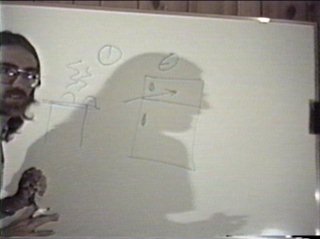
|
Here's another example of time dilation. Suppose I cut a roast in half, throw one half in the
freezer, and one half I leave on the table. I come back after a week and examine both roasts. One
is terribly decomposed, the other is fresh, but very cold and hard. If I relied on molecular clocks
to tell the time by, I might be convinced that changing the temperature of an object causes time
to dilate. We know this isn't true, because we don't rely on molecular clocks, and we know both
halves of the roast are exactly the same age, because we know that it is not time which slows down
in the freezer, it is the rates of certain physical interactions. Our clocks depend on the rates of
other physical interactions, but they are physical interactions none-the-less, and as such, they
may progress at differing rates under extreme conditions.
|
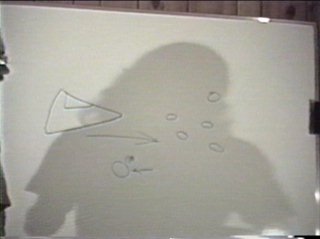
|
An example of such extreme conditions is relativistic motion against the ether. Remember that charge
is an ether wind. The charged particles are surrendering energy to space-time and replacing it
via gravitational radiation. The cosmological spreadsheet of a particle determines the rate at which the particle
surrenders energy to the ether, and its mass reflects the replacement rate of the energy. If I
accelerate through the ether, I am racing into a headwind. It takes a charged particle more energy
to push against an ether wind, because the energy of encountered quanta of space-time are
enhanced by the kinetic energy of the vehicle against them, so it takes more energy to kick the
quanta away in the vehicle's direction of motion. As it uses more energy to support charge
quantization, it must radiate more energetic gravitons, or a greater abundance of gravitons. The
relationship between charge and gravity is stressed. The charged particles have to spend more
time making gravitons, their charge winds die down. Charge may be a significant contributor to
the rates of physical interactions involving elementary particles. If charge winds die down, charged
particles will have a diminished force between them. If the mass of the charged particles are
higher, it takes more energy to move them. The combined effects lead to a diminshed rate of
physical interactions between charged particles. Clocks relying on the hyperfine transitions of
atomic nuclei would slow. The progression of time as a cosmological force, the phenomenon of now,
is unaffected. (2008 NOTE: There is a slightly more lucid account of the phenomenon on the
String Basics page in the paragraph concerning particle mass.)
|
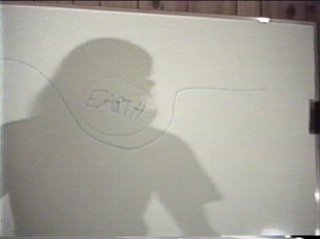
|
Embedding diagrams are discussed and compared with the depiction of an energy-density gradient
of space-time which is derived from the corpuscular treatment of energy and space. In the corpuscular
treatment of charge mechanics, the space-time near the surface of charged particles can also be
said to be curved in one domain because of the energy difference between charge couriers before
and after the charge interaction with the nucleus. Keep in mind that it is the gravitational
radiation of a particle which represents the fuel of the charge force. Even
a particle with a net neutral charge participates in the charge interaction via its quark
constituents, and so displays a mass. If the particle has no mass, it sources no gravitational
radiation, and consequently should not be considered a stable charged particle. It may,
however, participate in the charge force as a courier. Since quanta of similar frequency interact
in what I term "phase-mixing" interactions, the density gradient of space-time is smoothed by the
depleted quanta of space-time mixing phases in the vicinity of a gravitating body. Corpuscular
space-time therefore behaves like a quantum fluctuating foam, because a depleted quanta need not
move very far before having such a phase-mixing interaction with another depleted quanta comprising
space-time.
|











